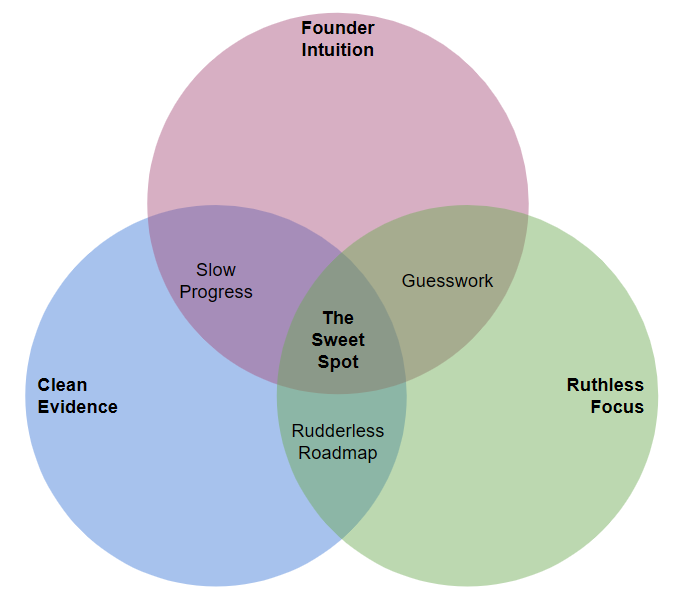From Intuition to Evidence: How to Structure Founder Intuition Without Killing It (Part 1)
Founder Intuition: Even good founder intuition needs supporting evidence
Over the last couple of months I’ve spoken to and interviewed dozens of tech start up founders and aspiring founders and the common thread amongst all of them was the strength of their intuition and their ability to identify market opportunities. However, even founder intuition needs support, especially when money is on the line.
As in the Reddit example provided above, the iconic movie, Field of Dreams, popularized the phrase "If you build it, they will come." It became a romantic notion that mirrors how many founders approach their startups by trusting their intuition about what the market needs (much like what happened in the reddit story above). But after nearly three decades of building technology, with startups facing a 50-60% insolvency rate as per a 2024 analysis from PwC, we've learned that intuition alone isn't enough. What we build must earn and maintain the right to exist through systematic validation of the actual customer problem and pain point, not just founder conviction.
There are thousands of unique stories about how technology companies have succeeded, but some universal truths apply to all of them. Even the best founder intuition misses critical nuances which come in the form of questions they haven't thought to ask, assumptions they didn't know they were making, or problems that only emerge in real-world use. That's why every modern technology company understands that sustainable growth requires a counterintuitive discipline: start small and validate constantly. Find a homogeneous group of users with shared priorities who urgently need one specific problem solved and who will pay for that solution.
Build incrementally, test your assumptions with real customers, secure predictable revenue, and only then expand outward.
This disciplined approach to validation isn't about lacking confidence in your vision. It's about recognizing that unforeseen gaps between intuition and reality can make or break a startup, and the disciplined practice of gathering unbiased evidence is how you find them before they find you. The reason experienced builders embrace this systematic approach over pure intuition is because many have first hand experience coming to the realisation that:
People might not want or buy what you build, regardless of how certain you feel.
People might not see the value that seems obvious to you.
People might see the value but still not use what you build (at least not regularly).
Your intuitive understanding might not actually address the real problems people have.
It will take more time than you think to discover what truly matters to users.
The true source of value may often not be what your intuition tells you the market needs.
The only way to bridge the gap between intuition and reality is to get your product into users' hands as fast as possible to speed up the feedback loop and replace assumptions with evidence.
The Trifecta of good product decisions:
This leads us to the core paradigm of good product decisions for startups, which is that good product decisions sit at the intersection of founder intuition, clean evidence, and ruthless focus. At the earliest stages you need all three to build the right thing, the right way, at the right pace. Miss one and you hit a common failure mode:
Without Founder Intuition you miss out on the strategic point of view and the roadmap becomes rudderless.
Without Clean Evidence you risk guessing what the market wants and you may build something that doesn’t exactly address what the market actually needs.
Without Ruthless Focus you risk chasing too many ideas at once, causing progress to slow down and at times, completely grind to a halt as teams switch from idea to idea.
Putting the Trifecta into Practice
Each element of the trifecta requires specific actions to implement:
Founder Intuition: Structure it by mapping stakeholders and their problems (Steps 1-2)
Clean Evidence: Gather it through systematic validation of the customer problem using standardised evidence templates
Ruthless Focus: Apply it through clear diagnosis, policy, and coherent actions (Rumelt framework)
Let's dive into how to harness each element, starting with structuring your founder intuition.

